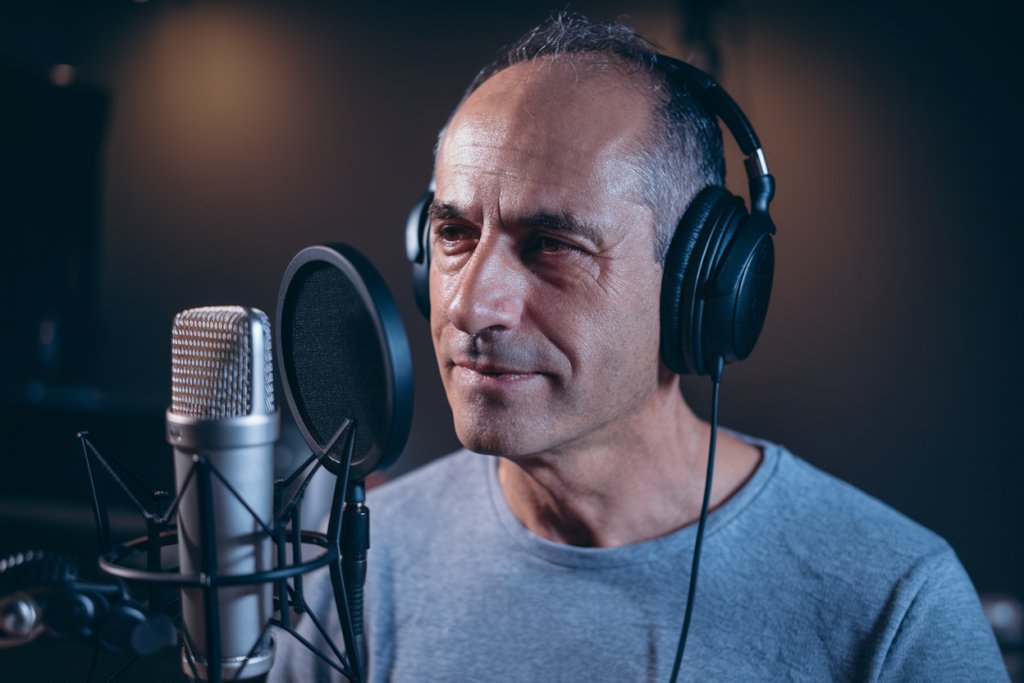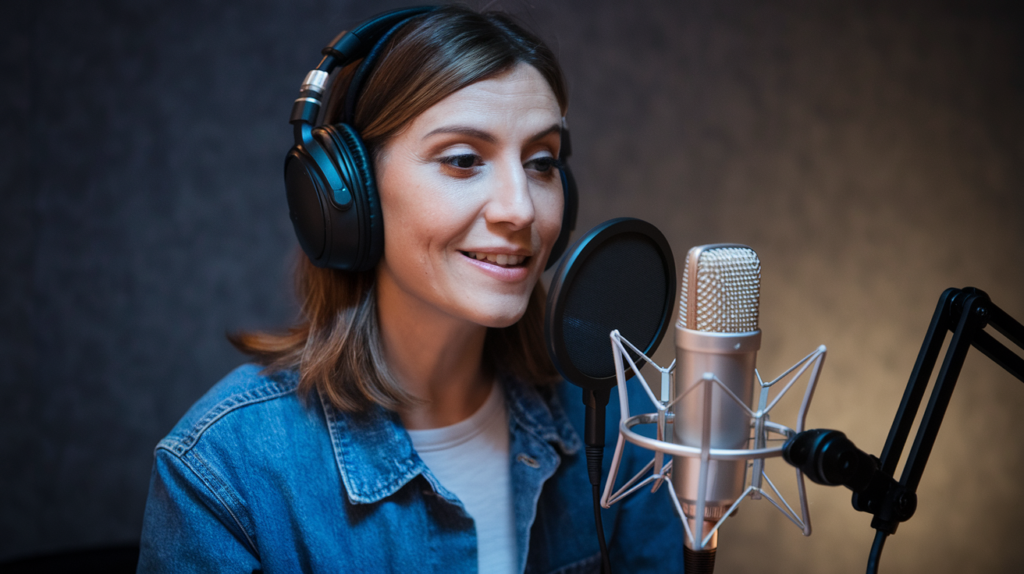Mastering lip sync in Italian can be a game-changer for anyone looking to dive into the world of dubbing or performance arts. It’s not just about matching words; it’s about capturing the essence and emotion behind each phrase. I’ve discovered that perfecting this skill opens doors to more authentic connections with audiences, whether on screen or stage.
Importance Of Lip Syncing
Mastering lip syncing in Italian significantly enhances performance quality. It goes beyond just matching spoken words to the movements of lips; it captures emotions and nuances present in dialogue. Engaging an audience requires authenticity, which effective lip syncing provides.
Lip syncing plays a critical role in dubbing projects. Accurate synchronization ensures viewers remain immersed in the story. When performers match their lip movements with voiceovers, it fosters believability and maintains the narrative flow.
Conveying character emotions hinges on precise lip sync techniques. Emphasizing tonal variations during delivery can amplify emotional impact. Audiences connect more deeply when they perceive characters as relatable and genuine.
Practicing lip syncing improves overall acting skills too. It encourages awareness of pacing, rhythm, and inflection within lines. This practice benefits not only dubbing but also live performances where vocal delivery is crucial.
Prioritizing skillful lip syncing cultivates stronger connections between performers and their audiences while enhancing storytelling effectiveness across various media platforms.
Techniques For Improving Lip Sync
Improving lip sync in Italian requires a blend of understanding phonetics and consistent practice. These techniques can enhance accuracy and emotional delivery in performances.
Understanding Phonetics
Understanding phonetics is crucial for achieving precise lip sync. Familiarizing myself with the sounds of Italian helps me articulate words more accurately. Key elements include:
- Vowels: Italian vowels are clear and distinct, consisting of five main sounds: A, E, I, O, U.
- Consonants: Pay attention to voiced and voiceless consonants like B/P or D/T. Their pronunciation affects mouth movements.
- Diphthongs: Recognize diphthongs such as “ai” or “ei,” which require specific mouth shapes to convey correctly.
- Syllable Stress: Understanding which syllables are stressed guides my pacing and emphasis during dialogue.
By mastering these phonetic details, I can align my mouth movements with spoken words effectively, enhancing overall performance quality.
Practicing With Italian Music
Practicing with Italian music significantly improves my lip syncing skills. This method immerses me in the rhythm and flow of the language while providing several advantages:
- Melodic Patterns: Songs often feature repetitive phrases that help reinforce word recognition and pronunciation.
- Emotion Expression: Analyzing how singers convey emotions through their voices enhances my ability to express similar feelings while syncing lips.
- Rhythm Training: Engaging with music trains my ear for timing, ensuring that I match speech patterns accurately during performances.
Incorporating these practices into regular training sessions fosters both linguistic proficiency and artistic expression in Italian dubbing or acting roles.
Tools And Resources
Utilizing the right tools and resources can significantly enhance lip sync skills in Italian. Here are some effective options to consider.
Apps For Lip Sync Practice
- Dubsmash: This app allows users to create short videos by lip syncing to popular audio clips, including Italian dialogues and music.
- TikTok: TikTok offers features for practicing lip sync with a wide range of Italian content creators who share engaging challenges.
- Vigo Video: This platform provides an array of soundtracks, enabling performers to practice lip syncing with diverse Italian phrases and songs.
- Rehearsal Pro: Designed specifically for actors, this app helps memorize lines while allowing for vocal performance practice alongside video playback.
- YouTube Channels: Numerous channels focus on theater techniques that include lip sync tutorials in Italian, providing visual guidance on phonetics and emotional delivery.
- Webinars: Many acting schools offer webinars dedicated to dubbing techniques, often featuring industry professionals sharing insights into effective lip syncing practices.
- Online Courses: Platforms like Udemy or Coursera provide structured courses focusing on voice acting and dubbing, complete with exercises tailored for mastering lip sync in various languages, including Italian.
- Social Media Groups: Joining Facebook or LinkedIn groups centered around dubbing can foster connections with other performers while offering access to shared resources and tips related to improving lip sync skills.
By leveraging these tools and resources, one can refine their ability to deliver authentic performances that resonate emotionally with audiences through precise lip syncing in Italian.
Common Challenges In Lip Syncing
Lip syncing in Italian presents unique challenges that can hinder performance quality. Understanding and addressing these obstacles is essential for achieving effective synchronization.
Mispronunciations
Mispronunciations create significant barriers in lip syncing. Incorrectly articulated sounds can disrupt the flow of dialogue, leading to mismatched mouth movements and audio. For example, mispronouncing vowel sounds alters the intended emotional expression. To combat this, I focus on mastering specific phonetic nuances of Italian, including regional dialects and stress patterns. Utilizing language learning resources or working with a native speaker enhances pronunciation accuracy and minimizes errors during performances.
Timing Issues
Timing issues also pose a challenge in lip syncing. Speaking too quickly or slowly compared to the audio can result in awkward pauses or rushed phrases. Accurate timing ensures that words align seamlessly with mouth movements and emotional delivery. I practice by breaking down scenes into smaller segments to grasp pacing better while rehearsing alongside original audio tracks. Consistent practice with metronomes or rhythmic exercises helps develop an innate sense of timing crucial for synchronizing speech effectively with visual elements.
Tips From Professionals
I gathered insights from industry experts to refine lip sync skills in Italian. Here are some essential tips:
- Practice with Native Speakers: Engaging with native Italian speakers provides real-time feedback and helps improve pronunciation accuracy.
- Use Phonetics Resources: Familiarizing myself with phonetic charts can clarify vowel and consonant sounds unique to Italian, enhancing my overall delivery.
- Break Down Dialogue: Analyzing scripts by segmenting lines into smaller phrases aids in mastering timing and emotional expression.
- Record and Review Performances: Recording practice sessions allows me to identify areas for improvement, such as pacing or mispronunciations.
- Emphasize Emotional Nuance: Focusing on the emotional context of each line enhances my ability to convey character feelings effectively during performances.
- Incorporate Rhythm Exercises: Practicing rhythmic patterns through music or metronomes strengthens my timing and syncopation skills, crucial for effective lip syncing.
- Utilize Technology Tools: Leveraging apps like Dubsmash or TikTok can provide exposure to popular audio clips, making practice more engaging while improving recognition of intonation patterns.
- Attend Workshops or Classes: Participating in specialized training sessions offers direct guidance from professionals experienced in dubbing techniques tailored for Italian language performance.
- Analyze Successful Performances: Studying accomplished actors’ performances illustrates effective lip syncing strategies, allowing me to adopt best practices observed in their work.
- Stay Consistent with Practice: Regularly dedicating time to practice ensures continuous improvement and reinforces both linguistic proficiency and artistic expression within my craft.
Conclusion
Mastering lip sync in Italian is a journey that requires dedication and practice. By focusing on phonetics emotional delivery and timing I can elevate my performances to connect more deeply with audiences. Utilizing tools like apps and online resources makes this process engaging and effective.
I’ve found that practicing with native speakers not only sharpens my pronunciation but also enriches my understanding of the language’s nuances. Breaking down scenes into smaller segments helps me manage timing issues while reinforcing rhythm through music keeps my skills sharp.
With consistent effort I’m confident I can refine my lip sync abilities and enhance storytelling across various platforms. Embracing these techniques will undoubtedly lead to more authentic performances that resonate with viewers.








